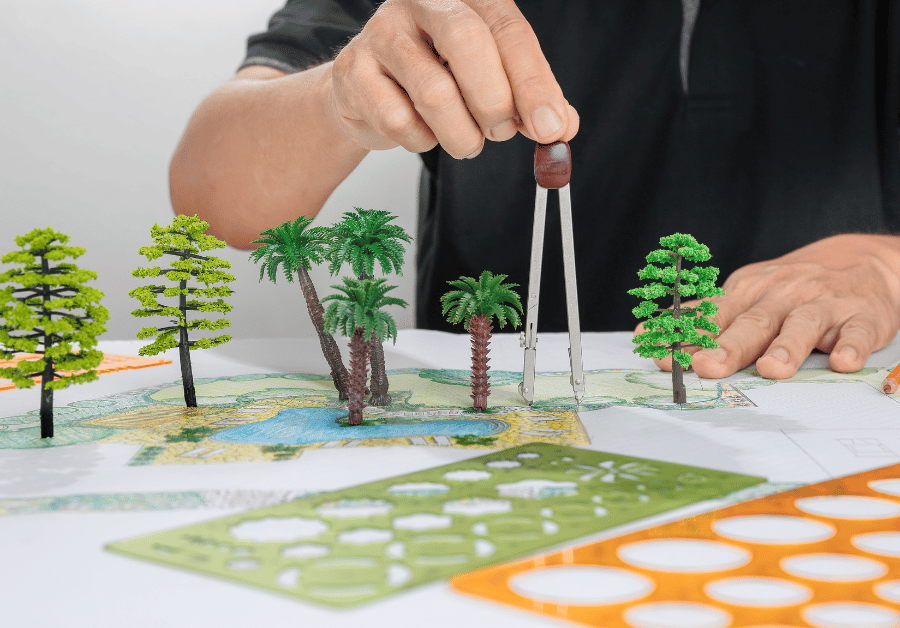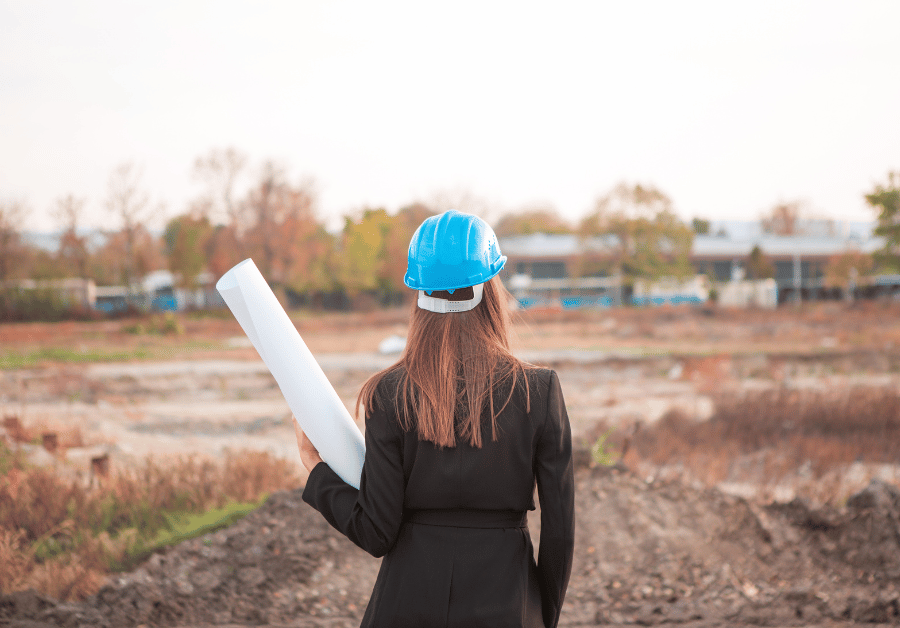Unlocking Your Outdoor Potential: The Power of a Landscape Architect in Australia
Picture this: a stunning outdoor space that not only looks incredible but also functions perfectly for your lifestyle, withstands Australia's unique climate, and even enhances the value of your property. Sounds like a dream, right? For many homeowners and businesses across Sydney, Melbourne, Perth, Brisbane, Adelaide, and Hobart, this dream becomes a vibrant reality with the expertise of a landscape architect.
But what exactly does a landscape architect do? Are they just fancy garden designers? The truth is, the profession of landscape architecture is far more expansive and impactful than many realise. It's a blend of art, science, and environmental stewardship, crafting everything from intimate residential gardens to sprawling urban parks and large-scale environmental projects. If you're looking to transform your outdoor environment, understanding the role of a skilled landscape architect is your first crucial step.
What Exactly Does a Landscape Architect Do? Beyond Just Gardens
When you hear "landscape architect", your mind might immediately go to beautiful gardens. While garden design is certainly a core component, the scope of a landscape architect's work extends much further. They are master planners of outdoor spaces, integrating natural and built environments to create functional, sustainable, and aesthetically pleasing places for people to live, work, and play.
Their expertise encompasses a vast array of projects, including:
- Residential Gardens: From small courtyards to expansive estates, they design outdoor living areas, swimming pool surrounds, entertainment zones, and private sanctuaries, like the thoughtful integration seen in projects such as the Erindale Residence.
- Urban Design & Public Spaces: Think city parks, plazas, streetscapes, public squares, waterfront developments, and even the design of entire urban precincts. They contribute to the liveability and character of our cities. Many landscape architecture studios, like Wax Design in Adelaide, specialise in this area, creating vibrant community spaces.
- Commercial & Institutional Projects: Designing outdoor areas for corporate campuses, hospitals, schools, universities (like the campuses at Adelaide University), and retail centres, enhancing user experience and environmental performance.
- Environmental Planning & Restoration: Tackling critical issues like climate change adaptation, biodiversity conservation, water sensitive urban design (WSUD), and the rehabilitation of degraded landscapes. Projects like the Monarto Safari Park expansion or conceptual designs such as the Yitpi Yartapuultiku (a conceptual design exploring Indigenous connection to country) highlight this vital work.
- Infrastructure Projects: Integrating roads, bridges, and public transport hubs into their surrounding environment, ensuring ecological sensitivity and visual appeal.
A true landscape architect possesses a unique skill set, combining artistic vision with a deep understanding of horticulture, ecology, engineering principles, and urban planning. They consider everything from soil types and drainage to sun paths, prevailing winds, and the cultural context of a site. Their goal is to create enduring, resilient, and inspiring outdoor environments.
Why You Need a Landscape Architect in Australia's Diverse Climates
Australia is a continent of incredible diversity, from the tropical humidity of Brisbane to the cool temperate zones of Hobart, the Mediterranean climate of Adelaide and Perth, and the dynamic urban environments of Sydney and Melbourne. This vast variation presents unique challenges and opportunities for outdoor design. This is precisely where the local knowledge and expertise of an Australian landscape architect become invaluable.
Navigating Local Conditions Across Our Cities:
- Sydney: With its iconic harbour and coastal influences, a Sydney landscape architect understands how to design for sea breezes, salt spray, and often sloping sites, creating spaces that maximise views while integrating native coastal flora.
- Melbourne: Known for its four distinct seasons, a Melbourne landscape architect excels at designing gardens that offer year-round interest, considering deciduous trees for winter sun and evergreen structures for summer shade. They often work on intricate urban spaces and heritage properties.
- Perth: Facing hot, dry summers and a need for water-wise solutions, a Perth landscape architect is adept at designing drought-tolerant gardens, utilising native Western Australian plants, and implementing efficient irrigation systems.
- Brisbane: In a sub-tropical climate, a Brisbane landscape architect will focus on creating lush, cool, and shaded outdoor rooms, managing stormwater, and selecting plants that thrive in high humidity.
- Adelaide: With its Mediterranean climate, an Adelaide landscape architect often designs for dry summers and wet winters, incorporating drought-resistant plants, effective drainage, and creating outdoor living areas that can be enjoyed for extended periods. The profession is well-supported here, with the SA Chapter of the Australian Institute of Landscape Architects (AILA) providing a strong community.
- Hobart: In a cooler climate, a Hobart landscape architect will design for frost, cooler temperatures, and perhaps more frequent rainfall, creating sheltered spaces and selecting plants that can withstand these conditions.
Beyond climate, an Australian landscape architect understands local council regulations, native plant species, and sustainable design principles crucial for our unique environment. They are experts in water conservation, bushfire-resistant design (especially relevant in many regional and peri-urban areas), and fostering biodiversity. Their designs are not just beautiful; they are responsible and resilient, ensuring your outdoor investment thrives for years to come.
The Journey from Concept to Creation: The Landscape Architecture Process
Engaging a landscape architect is a collaborative journey that transforms your initial ideas into a tangible, living space. While every project is unique, the process generally follows a structured path:
1. Initial Consultation & Visioning
This is where the magic begins. You'll meet with the landscape architect to discuss your dreams, needs, budget, and timeline. They'll ask about your lifestyle, how you envision using the space, and your aesthetic preferences. This crucial first step helps them understand your vision and establish the project's parameters.
2. Site Analysis & Assessment
The landscape architect will conduct a thorough analysis of your site. This involves studying existing conditions like topography, soil composition, drainage, sunlight patterns, prevailing winds, existing vegetation, views, and any regulatory constraints. They might also assess the surrounding context to ensure seamless integration.
3. Conceptual Design
Based on the brief and site analysis, the landscape architect develops initial concepts. These are often presented through sketches, mood boards, and preliminary plans, showcasing different layout options, material palettes, and planting ideas. This phase is about exploring possibilities and refining the overall direction of the design. It’s an exciting stage where you see your ideas begin to take shape.
4. Detailed Design & Documentation
Once a concept is approved, the landscape architect moves into detailed design. This involves creating precise plans, sections, elevations, and construction details. They specify materials, planting schedules (including specific plant names), lighting plans, irrigation systems, and any other elements required for construction. This comprehensive documentation is essential for obtaining permits and for builders to accurately quote and construct the design. This often includes detailed 'course code arch units' if the project involves complex architectural integration.
5. Construction Administration
During the construction phase, the landscape architect can provide oversight, ensuring the design is implemented correctly and to the highest standards. They act as your advocate, answering contractor questions, conducting site visits, and resolving any issues that may arise, ensuring the final outcome aligns with the approved design and vision.
Beyond the Backyard: The Broad Impact of Landscape Architecture
The influence of a landscape architect extends far beyond individual properties, shaping the very fabric of our communities and addressing global challenges. Their work contributes significantly to:
Urban Development & Public Spaces
From revitalising city centres to designing new residential communities, landscape architects are integral to creating liveable urban environments. They design parks, pedestrian zones, public plazas, and green infrastructure that enhance quality of life, promote social interaction, and provide essential ecological services within our bustling cities. Think of the beautiful public spaces that draw people in Sydney's Barangaroo, Melbourne's Federation Square, or the evolving Riverbank Precinct in Adelaide.
Environmental Restoration & Sustainability
In an era of climate change, the role of a landscape architect as an environmental steward is paramount. They design solutions for stormwater management, habitat creation, wetland restoration, and the integration of native flora to support biodiversity. Their expertise in sustainable design ensures that projects are not only beautiful but also ecologically sound, contributing to a healthier planet. This includes applying principles learned from in-depth 'case studies in landscape architecture' during their professional studies.
Commercial & Residential Projects
For businesses, a well-designed external environment can attract customers, enhance brand image, and improve employee well-being. For homeowners, investing in a professional landscape architect can significantly increase property value, improve curb appeal, and create cherished outdoor living spaces that become an extension of the home. Whether it's a large-scale commercial development or a bespoke residential garden in Victor Harbor, their design intelligence creates lasting value.
Choosing the Right Landscape Architect: What to Look For

Finding the right landscape architect is key to a successful project. Here's what to consider:
Qualifications & Accreditation
In Australia, look for a landscape architect who holds a professionally accredited degree, such as a Master of Landscape Architecture from a reputable institution like Adelaide University. This degree, often with specific 'entry requirements' and 'course code arch units', signifies a rigorous education in design, planning, and environmental science. Membership with the Australian Institute of Landscape Architects (AILA) is a strong indicator of professional standing and adherence to ethical standards. The AILA SA Chapter, for instance, provides excellent support and networking for professionals in South Australia.
Portfolio & Experience
Review their past projects. Do they align with your aesthetic preferences and the type of work you need done? Look for diverse 'projects' that demonstrate their versatility and problem-solving skills. Firms like TCL and Outerspace Studios showcase a wide range of award-winning Australian landscape architecture and urban design projects, offering inspiration and examples of high-calibre work.
Local Knowledge & Specialisation
An understanding of local council regulations, climate, and native plant species is critical. If you're in Adelaide, for example, a landscape architect with specific experience in the South Australian context will be invaluable. Some firms might specialise in residential, commercial, or environmental projects, so choose one whose specialisation matches your needs.
Collaboration & Communication
A successful project relies on good communication. Choose a landscape architect who listens to your ideas, communicates clearly, and is open to collaboration throughout the design process. A good 'design studio' will prioritise your input.
Investing in Your Outdoor Space: The Value Proposition
Engaging a landscape architect is an investment, not just an expense. The value they bring is multifaceted:
- Increased Property Value: A well-designed outdoor space can significantly boost your property's market appeal and value.
- Enhanced Lifestyle: Creating functional and beautiful outdoor rooms extends your living space, offering areas for relaxation, entertainment, and connection with nature.
- Environmental Benefits: Sustainable designs contribute to local biodiversity, reduce water consumption, and mitigate urban heat island effects.
- Problem Solving: They can overcome challenging site conditions, such as steep slopes, poor drainage, or tricky existing structures, turning liabilities into assets.
- Long-Term Savings: Smart design choices can lead to lower maintenance costs and reduced utility bills (e.g., through strategic shading).
From the initial 'study experience' at university, through 'semester course name' and 'course code units' that shape their 'knowledge' and 'expertise', a landscape architect is trained to deliver comprehensive solutions that stand the test of time.
Ready to Transform Your Australian Outdoor Space?
Whether you're in the bustling heart of Sydney, the cultural hub of Melbourne, the sunny shores of Perth, the vibrant city of Brisbane, the historic charm of Adelaide, or the serene landscapes of Hobart, a professional landscape architect can unlock the true potential of your outdoor environment. They don't just design spaces; they create experiences, enhance well-being, and build lasting value.
Don't settle for anything less than excellence for your outdoor dreams. Finding the right professional for your unique project can be daunting, but it doesn't have to be.
Ready to connect with experienced landscape architects near you?
Get Your 3 Free Quotes from Verified Landscape Architects Today!
